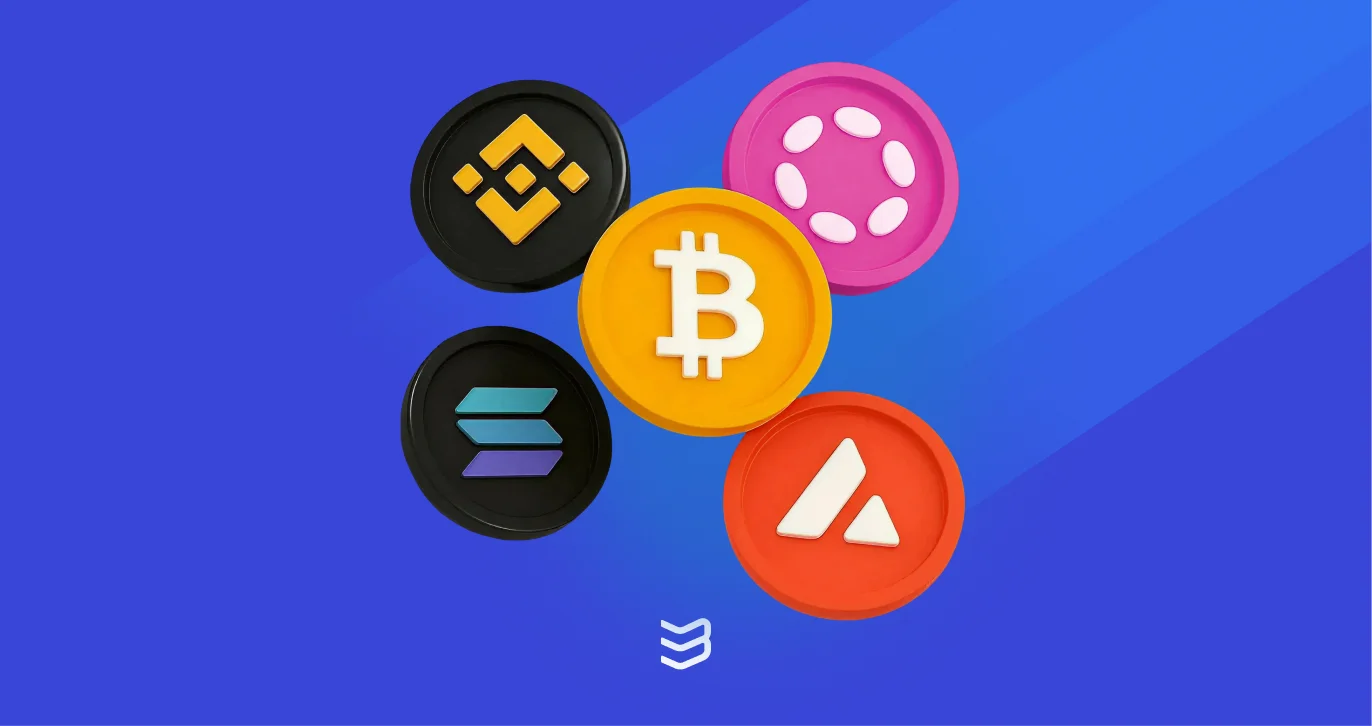tl;dr
- Layer 1 blockchains are the base networks that everything in crypto runs on.
- Bitcoin kicked it all off in 2009 as pure decentralized money.
- Since then, tons of new L1s have popped up, each building full ecosystems for DeFi, NFTs, gaming, etc.
- Key things we compare: How decentralized they really are, TPS, consensus method, developer-friendliness, and ecosystem size.
A Very Brief Introduction to Layer 1’s
Layer 1 blockchains are the foundational networks that power the entire crypto ecosystem. The first true Layer 1 was Bitcoin, introduced in 2009, designed purely as a decentralized digital currency. It proved that trustless, peer-to-peer value transfer was possible without banks or intermediaries.
Everything changed with the launch of Ethereum in July 2015. Ethereum expanded the concept of a blockchain from simple payments to a programmable platform through smart contracts. This unlocked tokenization, dApps, and entire on-chain economies.
Following Ethereum’s breakthrough, many new Layer 1 blockchains emerged. These networks evolved into full ecosystems supporting tokenized assets, NFTs, DeFi protocols, gaming worlds, and more.
In this article, we’ll be comparing popular L1 blockchains. For a deeper technical dive on L1s, see our guide here.
Key Technical Metrics We’re Comparing
When evaluating top Layer-1 blockchains, several core technical metrics help reveal their strengths and trade-offs.
Decentralization sits on a spectrum, shaped by validator count, node distribution, and governance. Transactions per second (TPS) highlights raw throughput, while consensus mechanisms, from Proof of Work (PoW) to Proof of Stake (PoS) and beyond, impact security, efficiency, and finality.
We also look at ecosystem adoption, including active users, developer activity, and real economic value created. Finally, technical architecture such as virtual machines, parallelization, and scalability features helps determine how well each chain can support long-term growth.
Bitcoin: The Original, Most Secure Layer-1
Bitcoin remains the first and most secure Layer-1 blockchain, powered by a battle-tested Proof-of-Work consensus, unmatched hashrate, and globally distributed nodes. In 2025, it continues to serve as the foundation of decentralized digital value, even as new programmability and scalability layers emerge.
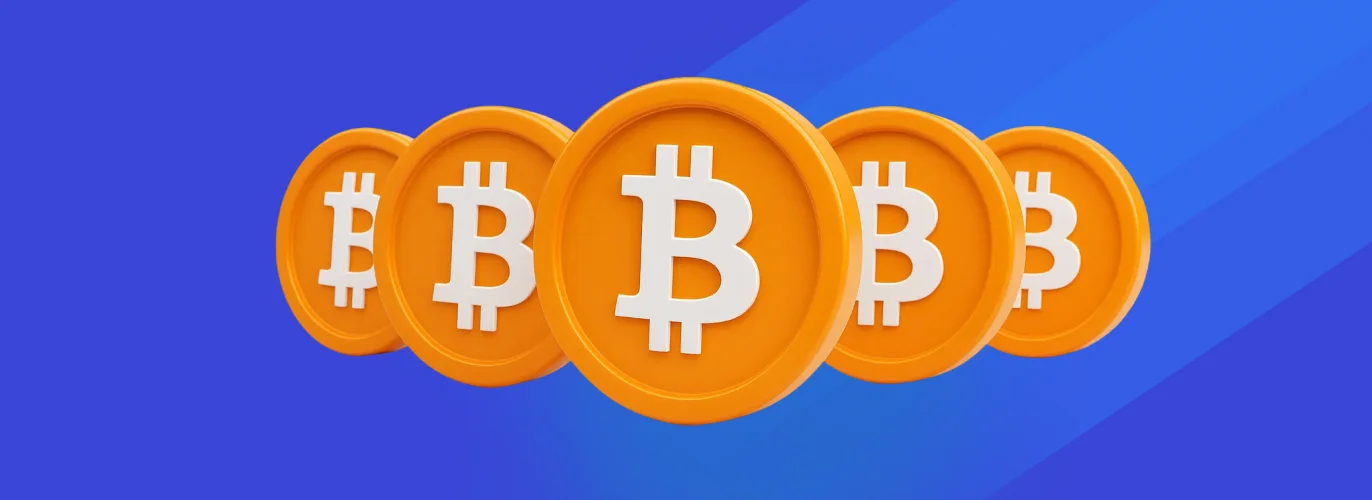
Proof-of-Work (SHA-256) & Difficulty Adjustment
Bitcoin uses SHA-256 in its PoW mechanism, requiring miners to solve cryptographic puzzles to validate blocks. Every 2,016 blocks, roughly two weeks, the network automatically adjusts difficulty to maintain its 10-minute block time, ensuring consistent performance even as global mining power fluctuates.
Unmatched Hashrate & Economic Security (2025 Stats)
As of November 2025, Bitcoin’s hashrate is around 1.153 ZH/s, with a record 1.442 ZH/s reached in September. With over 38% year-over-year growth, this immense hashrate makes Bitcoin economically unassailable, as the cost of attacking the network far exceeds any realistic reward.
Nakamoto Coefficient & Global Node Distribution
Bitcoin’s decentralization remains strong, supported by thousands of nodes and mining pools across North America, Eurasia, and South America. No single entity controls a majority of the hashrate, giving Bitcoin a resilient Nakamoto coefficient and robust geographic distribution.
Scalability Reality: Base Layer vs Layer-2
The base chain processes ~7 TPS, but Bitcoin’s scalability now lives on Layer-2s. The Lightning Network, Ark, Statechains, and BitVM add instant payments, higher throughput, and even smart contract capabilities, without compromising base-layer security.
Programmability: OP_CAT, BitVM, Ordinals & Runes
Bitcoin programmability is evolving. OP_CAT expands scripting, BitVM introduces Turing-complete logic, while Ordinals and Runes fuel the rise of NFTs and fungible tokens on Bitcoin, turning the network into a broader digital asset platform.
Energy Use & Renewable Mining Trends (2025)
Mining still consumes significant energy—about 1,335 kWh per transaction—but renewable adoption is rising sharply. Hydropower, solar, and wind are driving cleaner and more efficient mining worldwide.
Pros & Cons of Bitcoin as a Layer-1 in 2025
Bitcoin’s strengths as a Layer-1 continue to center around its unmatched security, deep decentralization, and mature global ecosystem. Its enormous hashrate and strong economic incentives make it the most resilient blockchain ever created, while its censorship resistance and immutability remain unparalleled.
At the same time, Bitcoin faces limitations that stem from its conservative, security-first design. The base layer still processes only ~7 transactions per second, fees rise sharply during congestion, and programmability remains limited compared to Ethereum and newer chains. Energy consumption is significant, though steadily improving with increased renewable usage.
Ethereum: The Original Smart Contract Platform
Ethereum remains the most influential smart contract network, continuing to evolve with major upgrades that reinforce its leadership in decentralization, programmability, and Layer-2–driven scalability. Below is a detailed breakdown of its core aspects in 2025.
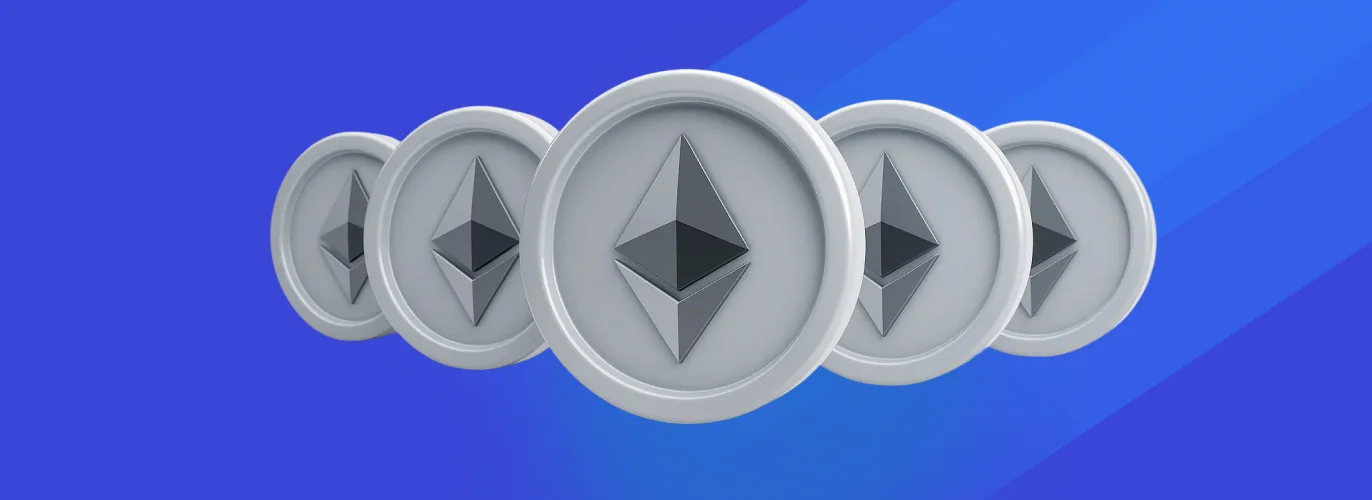
Consensus Mechanism (Post-Merge PoS + Upcoming Pectra Upgrade)
Since completing its transition to Proof of Stake in 2022, Ethereum now relies on validators who secure the network by staking ETH, dramatically reducing energy usage while strengthening economic security. The upcoming Fusaka hard fork improves performance for users, developers, rollups, and validators through cheaper L2 costs, better client efficiency, and lower hardware requirements
Scalability Roadmap (Danksharding, L2 Ecosystem, Verkle Trees)
Ethereum’s scaling strategy centers on Layer-2 rollups and major protocol upgrades. Danksharding (EIP-4844) introduces blob transactions to drastically reduce rollup costs and increase data throughput. Meanwhile, Optimism, Arbitrum, zkSync, and other L2s now handle the majority of transactions while inheriting Ethereum’s base-layer security. Verkle Trees, another milestone on the roadmap, will reduce node storage requirements and improve decentralization by making it easier to run full nodes.
Security & Decentralization Stats (Nodes, Nakamoto Coefficient)
With more than 100,000 active nodes as of 2025, Ethereum remains one of the most decentralized networks in existence. Its high Nakamoto coefficient reflects a broad validator distribution, ensuring no single operator or entity has disproportionate control. This decentralization underpins Ethereum’s strong security guarantees.
Programming Language & Developer Experience
Ethereum’s smart contracts are built primarily in Solidity, supported by advanced tooling such as Hardhat, Foundry, and OpenZeppelin. Developer infrastructure, such as Infura, Alchemy, Ethers.js, and WalletConnect, makes Ethereum one of the most accessible ecosystems for builders, enabling fast development.
Pros & Cons in 2025
Ethereum leads in smart-contract capabilities, developer tooling, and ecosystem maturity. Its strong security, active community, and robust Layer-2 interoperability ensure long-term resilience and growth.
Base-layer throughput remains limited, fees can spike during congestion, and Ethereum’s upgrade cadence is complex, slowing certain improvements.
Solana: The High-Performance Monolith
Solana is widely recognized as one of the fastest and most efficient Layer-1 blockchains, built around a unique architecture that prioritizes speed, parallelization, and high throughput. Its design enables a seamless, scalable environment for DeFi, NFTs, gaming, and high-volume applications. Below is a detailed look at Solana’s core features and status in 2025.
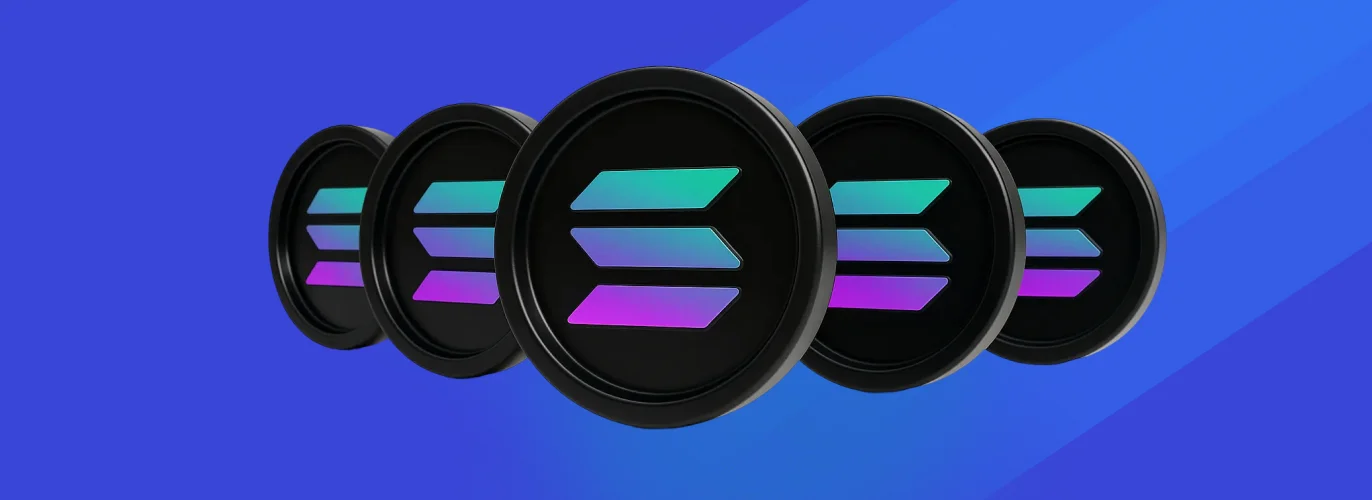
Proof-of-History + Tower BFT Consensus
Solana’s hybrid consensus combines Proof-of-History (PoH) with Tower BFT. PoH acts as a decentralized, cryptographic clock that timestamps transactions in a verifiable sequence, reducing communication overhead among validators. Tower BFT, a customized version of pBFT, uses stake-weighted voting to finalize blocks, requiring a two-thirds supermajority of staked SOL. This combination enables rapid block confirmations, high throughput, and a secure, decentralized environment optimized for speed.
Real-World TPS vs Theoretical Throughput (Firedancer’s 2025 Impact)
While Solana is theoretically capable of processing 50,000+ TPS, real-world throughput has historically been lower due to network congestion and hardware limitations. The 2025 rollout of Firedancer, an independent validator client built by Jump Crypto, is set to change this. Firedancer promises major improvements to reliability, stability, and scalability, bringing real-world TPS much closer to theoretical limits. It also reduces downtime and makes the network more resilient under extreme load.
Parallel Processing with Sealevel VM
Solana’s Sealevel VM allows for parallel transaction execution, meaning non-overlapping transactions can run simultaneously. This is one of Solana’s biggest differentiators, enabling high-frequency trading, real-time gaming, and other intensive applications to run smoothly with exceptional speed and efficiency.
Network Outages History & Current Reliability
Solana’s rapid growth was accompanied by several notable outages driven by validator overload and traffic spikes. Since then, extensive upgrades, including better validator software and the Firedancer client, have significantly improved stability.
Pros & Cons in 2025
Solana offers exceptional throughput, ultra-low latency, and a powerful execution model that supports complex, high-volume applications. Its unique consensus and parallelization capabilities make it ideal for DeFi, NFTs, and gaming.
Its history of outages, high validator hardware requirements, and centralization concerns remain challenges. Additionally, Solana’s architecture introduces a learning curve for developers accustomed to EVM-based ecosystems.
Cardano: Research-First Approach
Cardano, developed by Ethereum Co-Founder Charles Hoskinson, is distinguished by its academic foundation, emphasizing peer-reviewed research, formal verification, and a layered architecture. Its methodical approach has produced one of the most rigorously designed blockchains in the industry. Below is a detailed breakdown of Cardano’s core attributes in 2025.

Ouroboros Praos & Upcoming Hydra Scaling
Cardano’s Proof-of-Stake consensus, Ouroboros Praos, divides time into epochs and slots, selecting block leaders based on stake to ensure security and decentralization. The 2025 Ouroboros Peras upgrade improves settlement times to roughly two minutes with a certificate-based system that accelerates finality.
Cardano’s Layer-2 solution, Hydra, is now running in testnet environments, achieving 100,000+ TPS per “head” and being adopted by more than 20 projects to reduce latency and costs. Meanwhile, Ouroboros Leios, a major redesign introducing parallel processing and concurrent chains, is in development to dramatically boost long-term scalability.
Plutus & the Extended UTXO Model
Cardano’s Extended UTXO (EUTXO) model builds on Bitcoin’s UTXO framework but adds embedded logic and data, enabling deterministic and predictable execution. Smart contracts are written in Plutus, allowing developers to simulate transaction outcomes and fees before submission.
This enhances reliability for complex DeFi operations such as batched swaps and intent-based user flows. Developer tooling continues to improve through the Plutus Application Backend (PAB), libraries, and SDKs.
Decentralization Metrics (Stake Pools & D Parameter = 0)
As of 2025, Cardano maintains over 3,200 independent stake pools, with no single operator holding more than 1.4% of total stake, one of the most decentralized PoS networks. The D parameter remains at 0, signaling broad stake distribution. Newly added Input Endorsers in 2025 increase throughput and reduce latency by up to 30%.
Development Pace vs Academic Rigor
Cardano is known for its deliberate, research-heavy development cycle. This focus on research brings reliability, security, and formal verification, but also slower feature deployment compared to more agile ecosystems. With the Voltaire governance era now active, ADA holders can propose and vote on upgrades, shifting Cardano toward community-driven evolution.
Pros & Cons in 2025
Cardano excels with its research-grounded design, strong decentralization, formally verified protocols, and powerful EUTXO model. Its governance system and long-term scalability roadmap position it as a resilient, future-focused platform.
Its slower development pace, still-maturing developer ecosystem, and evolving scalability solutions, especially Hydra, remain ongoing challenges for builders.
Avalanche: Subnets & Ultra-Fast Finality
Avalanche stands out as a high-performance Layer-1 blockchain known for its flexible subnet architecture and ultra-fast finality. In 2025, it continues to be a leading choice for teams building high-throughput dApps, gaming environments, and enterprise-grade chains.

Avalanche Consensus (Sub-second Finality)
Avalanche’s consensus protocol is engineered for speed, using randomized validator sampling and probabilistic finality to confirm transactions in under a second. The consensus method can confirm transactions typically within 1–2 seconds, even under heavy load.
The Snowman consensus powers sequential chains like the C-Chain, while the Avalanche DAG-style consensus supports parallelized execution on other chains. Recent upgrades such as Frosty and Granite further improve resilience, consistency, and uptime, especially during periods of partial network desynchronization.
Primary Network vs Custom Subnets Architecture
Avalanche uses a hierarchical architecture built around subnets, independent blockchains that run in parallel.
The root subnet, is the primary network and handles AVAX staking, validator coordination, and cross-subnet interoperability. Every validator must validate the Primary Network.
Developers can also launch tailor-made blockchains with custom rules, permissioning, gas models, or VM types. This makes Avalanche a strong fit for use cases requiring privacy, specific compliance needs, or highly optimized execution. By 2025, the ecosystem includes more than 100 active subnets powering gaming, institutional finance, and application-specific DeFi.
EVM Compatibility & Performance Numbers
Avalanche’s C-Chain maintains full EVM compatibility, enabling seamless deployment of Solidity smart contracts. The Avalanche Bridge facilitates fast transfers of ERC-20s and NFTs from Ethereum. Performance continues to be a key differentiator, with over 4,500 TPS achieved in production environments and stress tests exceeding 20,000 TPS. Fees remain low—around $0.08 per transaction.
Pros & Cons in 2025
Avalanche delivers exceptionally fast performance with near-instant finality and high throughput, making it ideal for applications that demand real-time responsiveness. Its subnet architecture offers powerful customization, allowing developers and enterprises to build tailored chains with their own rules, permissioning, and optimized virtual machines..
However, Avalanche still faces limitations. Its ecosystem, while growing, remains smaller and less mature than Ethereum’s, which can affect liquidity, tooling depth, and developer familiarity. The subnet model adds operational complexity for teams that need to manage their own validator sets or custom infrastructure. Additionally, some network upgrades require coordination across validators, and the security of custom subnets can vary.
Aptos: Block-STM and Move Reimagined
Aptos is a next-generation Layer-1 blockchain built on the Move programming language, designed to deliver high security, scalable performance, and advanced parallel execution. Its technical foundations and strong engineering heritage make it one of the most innovative chains in the Layer-1 landscape.
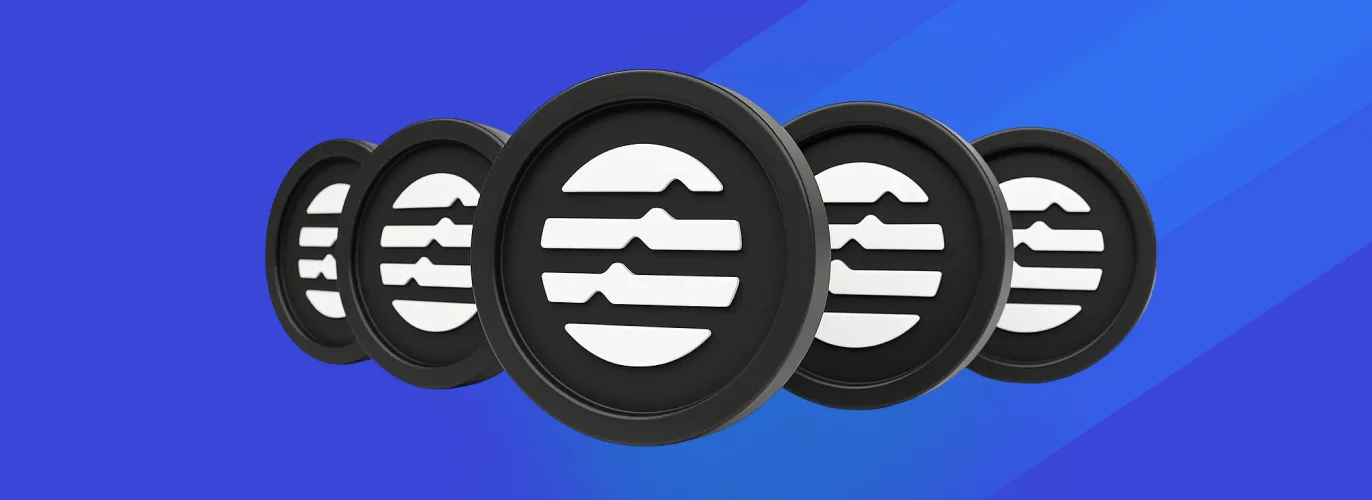
Diem Heritage & Parallel Execution Engine
Aptos is built by former Meta engineers who previously worked on the Diem (formerly Libra) project. This background shaped Aptos into a chain focused on safety, reliability, and cutting-edge performance.
Its core innovation is Block-STM, a parallel execution engine that processes many transactions at once rather than sequentially. Using optimistic execution, Block-STM runs transactions in parallel and only rolls back those that conflict, allowing Aptos to achieve extremely high throughput without sacrificing consistency or security.
Current Performance vs Sui: Direct Comparison
Aptos and Sui both use Move, but their architectures diverge.
Aptos keeps a linear blockchain design powered by Block-STM, favoring predictable behavior and developer simplicity. Sui, by contrast, uses a DAG-like structure and multi-leader consensus, enabling even faster finality for highly interactive apps such as gaming or real-time systems.
While Sui often achieves quicker settlement in practice, Aptos recently demonstrated up to 250,000 TPS under ideal conditions, marking both platforms as high-performance.
Pros & Cons in 2025
Aptos brings major strengths: extremely high throughput from Block-STM, strong asset safety via the Move language, sub-second finality, and the ability to perform on-chain upgrades without halting the network. These features position Aptos as a highly secure and future-proof platform for advanced dApps.
However, it still faces challenges in 2025. The Aptos ecosystem remains smaller than Ethereum, Solana, or even Sui, which impacts liquidity, tooling, and developer familiarity. Move also has a steeper learning curve, and while the tech is impressive, overall adoption has yet to catch up.
BNB Smart Chain (BNB Chain): Centralized Speed
BNB Smart Chain (BNB Chain) is known for being one of the fastest and most cost-efficient blockchains in the world, supported by a massive global user base. Its architecture blends elements from both the Cosmos and Ethereum ecosystems, resulting in a hybrid design that emphasizes performance, albeit at the expense of some decentralization.
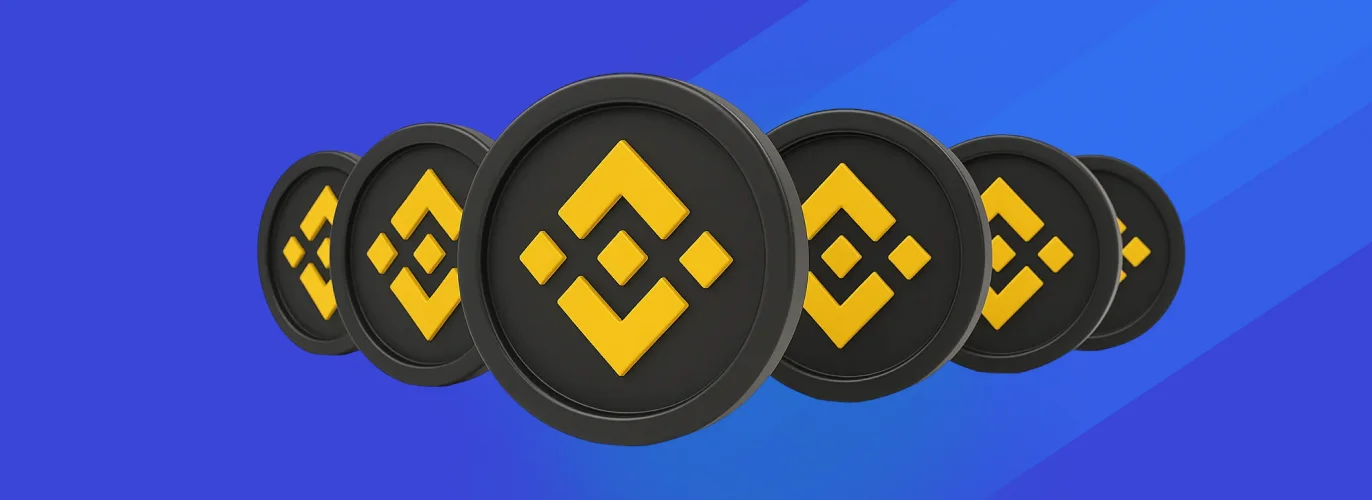
Cosmos SDK + Tendermint vs True Layer-1 Debate
BNB Chain’s architecture is split between two major components. The Beacon Chain (BC) uses the Cosmos SDK and Tendermint BFT to manage staking, governance, and validator coordination. Meanwhile, BNB Smart Chain (BSC) is an Ethereum fork that uses Proof-of-Staked-Authority (PoSA), allowing a small validator set to finalize blocks extremely quickly.
Because of this hybrid approach, part Cosmos, part Ethereum, there is ongoing debate about whether BNB Chain should be viewed as a “true” Layer-1 or a specialized hybrid platform.
Performance & Cost Advantages
BNB Chain consistently delivers high throughput (typically 200–300 TPS) and extremely low fees, often under $0.10 per transaction. Its optimized execution pipeline, efficient caching, and lightweight consensus allow it to handle high-volume DeFi and meme-coin activity with minimal latency.
Developers benefit from full EVM compatibility, easy tooling migration, and lower hardware requirements than chains like Solana.
Centralization Trade-offs
Much of BNB Chain’s speed comes from its PoSA model, which relies on a small, permissioned validator set. Governance influence from Binance and closely affiliated stakeholders raises concerns about censorship resistance, geographic diversity, and decentralization standards.
While this model enables fast upgrades and efficient attack mitigation, it trades off some of the trustless guarantees expected from more decentralized Layer-1s.
Pros & Cons in 2025
BNB Chain offers major advantages: a huge user base, low fees, fast block times, and full EVM compatibility, making it extremely attractive for developers and high-volume applications. Its hybrid architecture also enables rapid updates and responsive network management.
However, these benefits come with downsides. The network’s validator set is highly centralized, governance remains heavily tied to Binance, and its blend of Cosmos and Ethereum technologies raises questions about its Layer-1 purity and long-term decentralization.
Polkadot: Shared Security & Parachains
Polkadot is an advanced multi-chain network in the blockchain space. The chain was developed by Ethereum Co-Founder Gavin Wood, around the idea that many specialized blockchains can work together under a single shared security umbrella. Its architecture allows developers to build highly customized chains, called parachains, while relying on the Relay Chain for consensus, interoperability, and security.

Nominated Proof-of-Stake + GRANDPA/BABE
Polkadot secures its network using Nominated Proof-of-Stake (NPoS), where DOT holders nominate validators to ensure decentralization and economic alignment. Its consensus is split into two coordinated protocols: BABE, which handles block production through slot assignments, and GRANDPA, which finalizes blocks quickly and securely across the entire network.
This separation of responsibilities allows Polkadot to achieve efficient block production alongside robust, network-wide finality.
Relay Chain vs Parachain Architecture
At the center of Polkadot is the Relay Chain, responsible for consensus, shared security, and cross-chain coordination. It doesn’t host smart contracts itself; instead, it acts as the backbone connecting up to hundreds of parachains.
Parachains operate in parallel and can be tailored for specific use cases, such as DeFi, identity, gaming, governance, or enterprise solutions. As of 2025, more than 100 parachains are active, with the newer Agile Coretime model allowing chains to acquire blockspace dynamically rather than relying solely on long-term auctions.
Interoperability Advantage
Polkadot’s biggest strength lies in its interoperability.
Its XCMP and upgraded XCM v5 messaging protocols allow parachains to exchange data and assets easily, while bridges extend this connectivity to Ethereum, Bitcoin, and more. This creates a unified, cross-chain ecosystem where apps can interact without relying on external bridges or trusted intermediaries.
Pros & Cons in 2025
Polkadot offers strong advantages, including shared security for all parachains, deep customization, smooth on-chain upgrades, and powerful cross-chain communication. These features make it ideal for projects needing unique architectures while staying interoperable with the broader ecosystem.
However, the network also introduces complexity. Parachain slot allocation and coretime management can be challenging to navigate, and parachain composability is weaker than single-chain systems like Ethereum or Solana. Developers must also learn Polkadot’s unique architecture, and ecosystem fragmentation can occur if parachains build in isolation.
Near Protocol: Nightshade Sharding & Doomslug
Near Protocol is a high-performance Layer-1 blockchain built around scalable sharding and fast finality. The protocol’s design emphasizes usability, developer friendliness, and accessibility.
Near continues to stand out for its advanced sharding architecture, low validator requirements, and consistent throughput under real workloads.
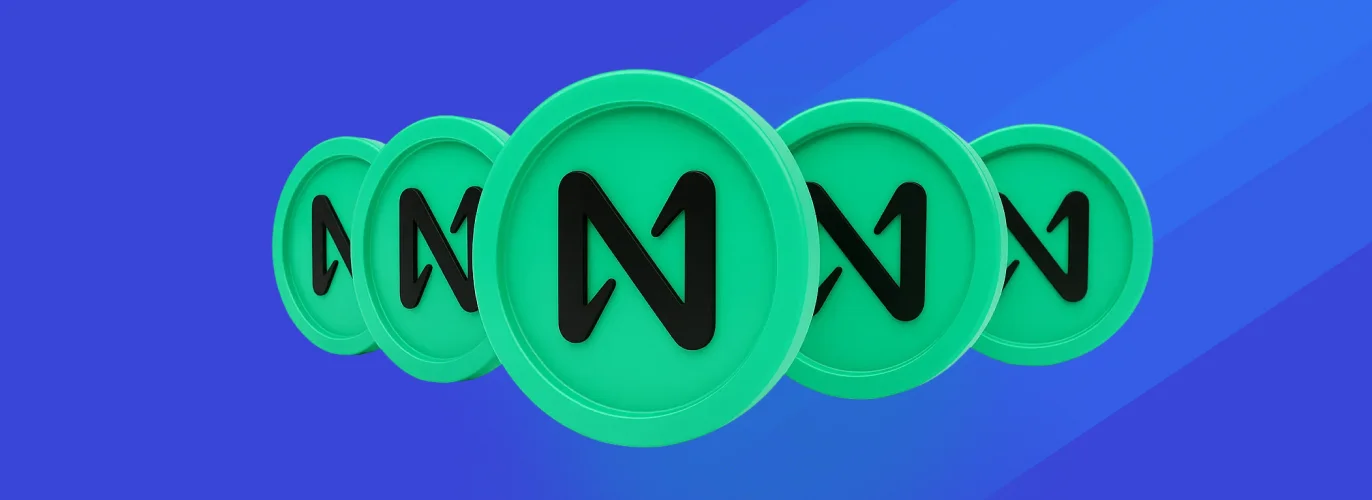
Nightshade Sharding & Doomslug Consensus
Near’s core innovation is Nightshade sharding, a system that splits the blockchain into multiple parallel shards that process transactions and smart contracts simultaneously. Each shard contributes a “chunk” to a single block, allowing the network to scale horizontally as demand grows.
Paired with this is Doomslug, Near’s fast finality mechanism, which achieves confirmation in under two seconds by leveraging a simplified block production process and rapid validator agreement.
Together, Nightshade and Doomslug enable high throughput, low latency, and strong network security without sacrificing decentralization.
Current Sharding Implementation Status (2025)
By 2025, Near’s sharding rollout is fully live, supporting up to 100 dynamically adjusting shards. Real-world throughput has reached over 100,000 TPS in stress environments, with everyday mainnet performance typically between 10,000 and 20,000 TPS.
Dynamic sharding allows the protocol to automatically scale up during peak activity and scale down when load decreases, helping maintain stable fees and predictable performance even under extreme network demand.
Low-End Hardware Validator Requirements
A standout feature of Near is its accessible validator requirements. The network is built to run on consumer-grade hardware, typically 8GB of RAM and a modern CPU, allowing individuals, small teams, and community operators to participate easily.
These requirements lower the barrier to entry, increase decentralization, and promote a diverse validator ecosystem.
Pros & Cons in 2025
Near offers high throughput, fast finality, dynamic scalability, and low validator requirements, making it one of the most efficient and accessible high-performance blockchains. Its architecture is particularly well-suited for real-time apps, gaming, and large-scale consumer-facing products.
However, the network still faces challenges. Its ecosystem is smaller and less liquid than Ethereum or Solana, and the complexity of sharded design can create a steep learning curve for developers. Tooling, integrations, and overall adoption continue to grow but remain behind more established chains.
Ton: Infinite Sharding & Dynamic Proof-of-Stake
TON, originally developed by Telegram, is a high-performance Layer-1 blockchain designed for mass adoption, seamless user onboarding, and unlimited scalability. Its architecture enables parallel execution across thousands of chains, positioning TON as one of the most scalable blockchains in production.

Telegram Origins & Technical Design
TON was born from Telegram’s ambition to bring blockchain functionality to hundreds of millions of users. Its core innovation is an “infinite sharding” architecture, where each account can operate its own chain, grouped into shardchains that process transactions in parallel.
A Masterchain stores validator stakes and global configuration, while Workchains and Shardchains execute transactions and smart contracts. TON’s dynamic Proof-of-Stake consensus adapts to network conditions, ensuring high performance and energy-efficient block production.
The TON Virtual Machine (TVM) supports smart contracts written in Fift, FunC, and even Solidity through compatible tooling. Cross-chain bridges extend TON’s functionality to Ethereum, BNB Chain, and Bitcoin, enabling asset portability and multi-chain applications.
Real Performance in 2025
TON has demonstrated exceptional real-world throughput and stability. The network is optimized for micropayments, gaming, social rewards, and high-frequency interactions. This is because transaction fees typically cost only a few cents, and asynchronous message passing eliminates bottlenecks.
Hypercube routing helps distribute transaction load efficiently, maintaining low latency even during network spikes. Telegram’s native @Wallet integration has become one of the largest crypto onboarding funnels, allowing millions of users to transact, tip, and interact with TON-based apps.
Pros & Cons in 2025
TON offers highly scalable performance through infinite sharding, low fees, energy-efficient PoS, and deep integration with Telegram, making it one of the easiest blockchains for mainstream users to access. Its growing interoperability and expanding developer ecosystem further strengthen its position as a leading consumer-focused blockchain.
However, TON faces centralization concerns due to Telegram’s heavy influence over governance and validator selection. Its developer experience is less mature than ecosystems like Ethereum or Solana, and its unique architecture introduces a learning curve. Validator diversity remains limited, and the network’s ecosystem trails more established chains in depth and tooling.
Side-by-Side Comparison Table (2025 Data)
Here's a side-by-side comparison table of the blockchains mentioned:

Which Layer-1 Is Technically “Best” in 2025?
While no single chain is objectively “best” in 2025, certain L1s lead in specific categories depending on what metric matters most.
Best for Decentralization: Bitcoin
Bitcoin remains the most decentralized Layer-1, supported by the highest Nakamoto coefficient and the widest global node distribution. Its Proof-of-Work consensus and strong resistance to centralization pressures have made it the definitive benchmark for decentralized blockchain design.
Best for Raw Speed: Aptos
Aptos leads in raw performance thanks to its Block-STM parallel execution engine, which has demonstrated up to 250,000 transactions per second in real-world stress tests. While Solana and NEAR offer similarly high throughput, Aptos currently edges ahead in peak execution speed.
Best for Developer Experience: Ethereum
Ethereum offers the most mature and well-supported development environment. The EVM, Solidity, extensive documentation, and vast tool ecosystem make it the default choice for builders. Its large community further accelerates innovation and onboarding.
Best for Scalability Roadmap Confidence: Ethereum
Ethereum also leads in long-term scalability strategy. Upgrades such as Danksharding, Verkle Trees, and deep Layer-2 integration create a clear and credible path toward massive throughput gains without sacrificing security.
Best for Security Track Record: Bitcoin
With more than 15 years of uninterrupted operation and no successful attacks on its core protocol, Bitcoin maintains the strongest security record in the industry. Its immense hashrate and simple, robust design make it the most secure L1 to date.
Future Outlook: What’s Coming in 2026 - 2027?
The years 2026 - 2027 are shaping up to be some of the most transformative in blockchain history. Major Layer-1 ecosystems are rolling out long-awaited scalability, security, and performance upgrades that will significantly redefine how they operate.
Ethereum: Danksharding and the Final Stages of the Roadmap
Ethereum’s biggest leap will come with Danksharding, expected around 2026–2027. This upgrade introduces large data blobs and decentralized data sampling, enabling thousands of Layer-2s and supporting millions of transactions per second.
The 2025 Fusaka upgrade and PeerDAS will lay crucial groundwork by improving data availability and raising throughput ahead of full sharding. Additional enhancements, such as Verkle Trees, stateless clients, and pruning, will reduce node load, while Ethereum also aims to become a decentralized AI coordination layer.
Solana: Firedancer & Alpenglow
Solana’s 2026 upgrades will focus on performance and stability. Firedancer, an independent validator client, dramatically improves throughput, reliability, and decentralization. The Alpenglow upgrade builds on this with further consensus and networking optimizations, strengthening Solana’s position in high-speed, real-time applications.
Cardano: Hydra & Midnight
Cardano will advance scalability through Hydra, enabling ultra-fast off-chain microtransactions suitable for gaming and DeFi. Midnight introduces privacy-preserving smart contracts, enhancing Cardano’s appeal to enterprises and regulated environments.
Sui: Mysticeti Consensus Upgrade
Sui’s upcoming Mysticeti upgrade will improve finality times and throughput, leveraging efficient consensus to support higher transaction loads and smoother user experiences.
The Convergence of L1 and L2
Across the industry, L1s and L2s will continue to merge into a singular environment. Faster bridges, unified UX, and improved interoperability will make shifting assets and interacting with dApps feel instantaneous and trust-minimized.
Conclusion
No Layer-1 blockchain dominates across all metrics. Bitcoin remains the gold standard for decentralization and security, while Aptos leads in raw speed, and Ethereum offers the most mature developer ecosystem and robust scalability roadmap. Solana, Cardano, and others each excel in specific areas like parallel processing, formal verification, or enterprise adoption.
Choose Ethereum for smart contracts and developer tooling, Aptos or Solana for high-throughput applications, and Cardano for research-driven, formally verified projects. The “best” L1 ultimately depends on your priorities and application needs.
FAQ
Which layer-1 blockchain is the fastest in 2025?
Aptos leads in raw performance with its Block-STM engine, achieving up to 250,000 TPS in stress tests. Solana and NEAR also offer high throughput, as Solana regularly exceeds 3,500 TPS, but Aptos currently edges them out in peak execution speed, making it the fastest choice for performance-critical applications.
Is Ethereum still the most secure layer-1?
While Bitcoin is more secure, Ethereum is not far behind, and is the most secure “smart chain” that allows tokenization and smart contracts. This is due to Ethereum’s large validator set, robust Proof-of-Stake consensus, and extensive ecosystem.
Its security is further enhanced by ongoing upgrades and a mature developer community.
Solana vs Sui: which is technically superior?
Solana excels in raw speed and real-world throughput, making it ideal for high-frequency applications. Sui offers superior finality and a unique consensus model, but Solana currently leads in overall performance and ecosystem maturity.
Will Cardano ever catch up in adoption?
Cardano is steadily growing its ecosystem and developer base, but it still lags behind Ethereum and Solana in adoption. Its research-driven approach and upcoming upgrades like Hydra and Midnight could accelerate adoption, but catching up will be difficult.
Best layer-1 for building a new dApp in 2025?
Ethereum is the best choice for building a new dApp in 2025 due to its mature ecosystem, extensive tooling, and strong developer community. For high-speed applications, Solana is an excellent option, offering superior performance and scalability.


